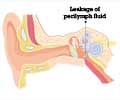
The VO senses ongoing self-motion and ensures that, while running, the jogger unconsciously compensates for the accompanying changes in the orientation of the head.
The team from University of Bordeaux in France and Ludwig-Maximilians-University (LMU) of Munich in Germany revealed that cells in the spinal cord which generate the rhythmic patterns of neural and muscle activity required for locomotion also adaptively alter the sensitivity of the hair cells in the VO.
It enables them to respond appropriately to the broad range of incoming signal amplitudes.
"We are not really aware of what movement actually involves because our balance organs react immediately to alterations in posture and head position," said neurobiologist Boris Chagnaud from LMU.
The hair cells, which detect the resulting changes in fluid flow in the semicircular canals in the inner ear, enable us to keep our balance without any conscious effort, he explained.
Advertisement
The whole adaptation process is controlled by neurons in the spinal cord, which transmit signals to the VO via nerve cells just before the muscles carry out the next locomotory behavior.
Advertisement
The team now intends to study whether all the hair cells in the inner ear also respond to efferent information emanating from the spinal cord.
The results were reported in the online journal Nature Communications.
Source-IANS















